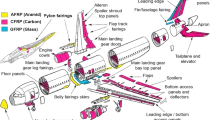Abstract
This paper deals with the investigation of gear finish hobbing using several cutting materials. Gear finish hobbing is a method for soft finishing of external cylindrical power transmission gears. Based on these results, the potential of the cutting materials cemented carbide, PM-HSS, cermet and PCBN were presented in this paper. The challenges in gear finish hobbing are small chip thicknesses and high cutting speeds. Regarding these points the wear behavior of the tools was investigated. For the investigation the fly-cutter process was used. In the conducted investigations the wear behavior at cutting speeds between 250 up to 2250 m/min was regarded. The conclusion is, cemented carbide tools have the highest potentials for gear finish hobbing at high cutting speeds. The cutting materials cermet and PCBN do not allow a stable process at cutting speeds above 1500 m/min.











Similar content being viewed by others
References
Schalaster R (2012) Optimierung des Fertigwälzfräsens von Verzahnungen. Dissertation RWTH Aachen
Klocke F, Gorgels C, Weber G-T, Schalaster R (2011) Prognosis of the local tool wear in gear finish hobbing. In: Production Engineering. WGP, Braunschweig
Klocke F, Brumm M, Sari D (2013) Fertigwälzfräsen von Verzahnungen – Potentiale und Grenzen bei Einsatz von Hartmetallwerkzeugen. Tagungsband zur 54. Arbeitstagung „Zahnrad- und Getriebeuntersuchungen“, WZL RWTH Aachen
Komori M, Sumi M, Kubo A (2003) Simulation of hobbing for analysis of cutting edge failure due to chip Crush. ASME report PTG-48068
Abood AM, Bicker R, Pennell T (2002) An analysis of cutting forces in gear hobbing. VDI Berichte 1665:129–143
Bouzakis K-D, Kombogiannis S, Antoniadis A, Vidakis N (2002) Gear hobbing cutting process simulation and tool wear prediction models. J Manuf Sci Eng 124:42–51
Brecher C, Brumm M, Krömer M (2014) Design of gear hobbing processes using simulations and empirical data. In: 9th CIRP conference on intelligent computation in manufacturing engineering, Naples, 23–24. June 2014
Weck M, Klocke F, Winkel O, Winter W (2003) Analysis of gear hobbing processes by manufacturing simulation. In: Production Engineering. WGP, Braunschweig
Uhlmann E, Rasper P (2011) Influences on specific cutting forces and their impact on the stability behavior of milling processes. In: Production Engineering. WGP, Braunschweig
Biermann D, Kahnis P (2011) Analysis and simulation of size effects in micromilling. In: Production Engineering. WGP, Braunschweig
Brinksmeier E, Riemer O (2000) Wirkmechanismen bei der Mikrozerspanung. Materialwiss Werkstofftech 31(8):754–759
N. N. (2008) LMT Fette Gear Cutting Tools and Knowledge, Product catalogue, Version 2.1, LMT Tools, Schwarzenbeck
Acknowledgments
The authors gratefully acknowledge financial support by the German Federation of Industrial Research Associations (AiF) [Project Number IGF-17007 N] for the achievement of the project results.
Author information
Authors and Affiliations
Corresponding author
Rights and permissions
About this article
Cite this article
Sari, D., Klocke, F. & Löpenhaus, C. Gear finish hobbing: potentials of several cutting materials. Prod. Eng. Res. Devel. 9, 367–376 (2015). https://doi.org/10.1007/s11740-015-0626-7
Received:
Accepted:
Published:
Issue Date:
DOI: https://doi.org/10.1007/s11740-015-0626-7




